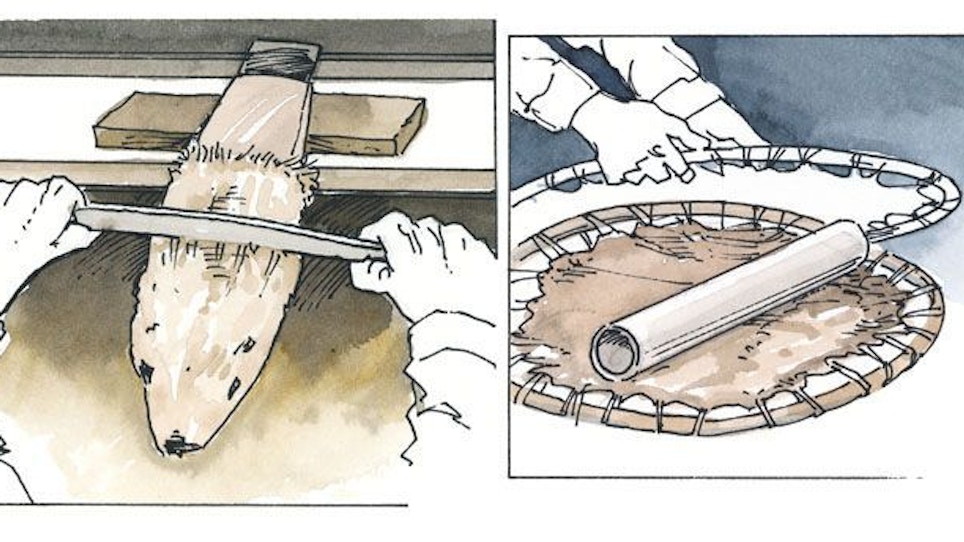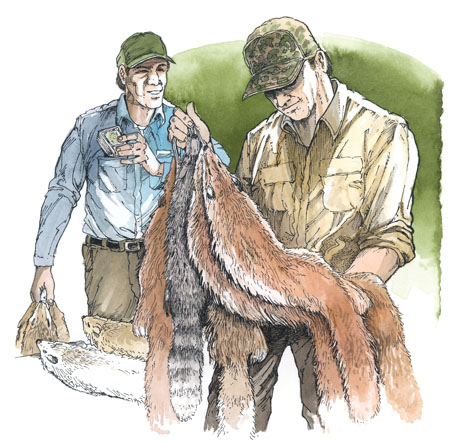 1. Don’t trap/hunt unless the pelts are prime. It’s that simple. Johnson says that around Harrisburg, Pa., pelts start to prime up around November 10th and are fully prime by Thanksgiving. If you don’t know, ask your local fur buyer.
1. Don’t trap/hunt unless the pelts are prime. It’s that simple. Johnson says that around Harrisburg, Pa., pelts start to prime up around November 10th and are fully prime by Thanksgiving. If you don’t know, ask your local fur buyer.
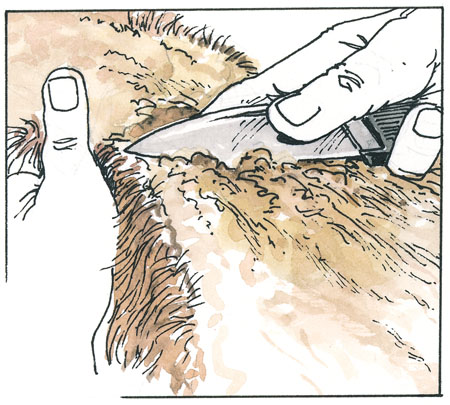 2. Skin immediately if possible. When fleshing a pelt, take extra time to remove all fat and flesh from the pelt. Foxes have very little fat and are usually no problem, but coons are just the opposite — lots of fat. I asked Jerry what to do with the fleshy shoulder area of a coon. He pulled a fresh pelt down and showed me the technique. Using a knife, he carefully cut through the flesh — down to the pelt — at the location just behind the ears. He then used his fleshing tool to scrape off the flesh down to the tail. It’s very important for this fleshy shoulder area to be completely scraped to qualify as a quality pelt. He said too many trappers do a poor job of removing flesh from this area. This inevitably decreases the value, and he has to re-scrape the pelt.
2. Skin immediately if possible. When fleshing a pelt, take extra time to remove all fat and flesh from the pelt. Foxes have very little fat and are usually no problem, but coons are just the opposite — lots of fat. I asked Jerry what to do with the fleshy shoulder area of a coon. He pulled a fresh pelt down and showed me the technique. Using a knife, he carefully cut through the flesh — down to the pelt — at the location just behind the ears. He then used his fleshing tool to scrape off the flesh down to the tail. It’s very important for this fleshy shoulder area to be completely scraped to qualify as a quality pelt. He said too many trappers do a poor job of removing flesh from this area. This inevitably decreases the value, and he has to re-scrape the pelt.
 3. You should dry fox and coyote pelts on the stretcher fur-side in for a day (allowing the skin to dry), and then turn fur-side out for final drying. On the other hand, you should stretch coons fur-side in. If you don’t allow the skin side to dry openly, it will likely lead to spoilage.
3. You should dry fox and coyote pelts on the stretcher fur-side in for a day (allowing the skin to dry), and then turn fur-side out for final drying. On the other hand, you should stretch coons fur-side in. If you don’t allow the skin side to dry openly, it will likely lead to spoilage.
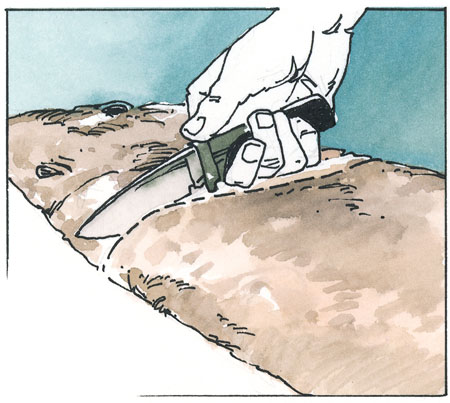 4. If you don’t have time to skin the animal, freeze it for a later time or take it to your fur buyer within a day. Don’t let un-skinned animals lay around. This could cause the fur to slip and spoil. If you must delay skinning, lay the animal on its back, not its side.
4. If you don’t have time to skin the animal, freeze it for a later time or take it to your fur buyer within a day. Don’t let un-skinned animals lay around. This could cause the fur to slip and spoil. If you must delay skinning, lay the animal on its back, not its side.
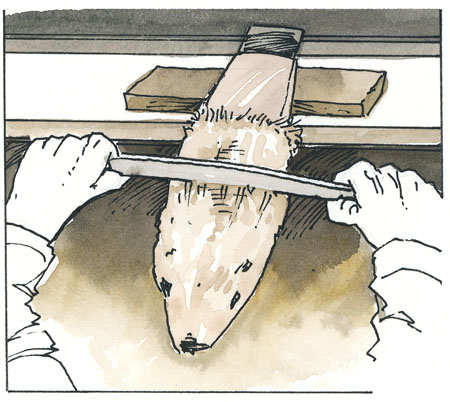 5. A quality fleshing board and scrapper make the job easier. Have plenty of wire or wood stretchers handy to put up your freshly scrapped pelts.
5. A quality fleshing board and scrapper make the job easier. Have plenty of wire or wood stretchers handy to put up your freshly scrapped pelts.
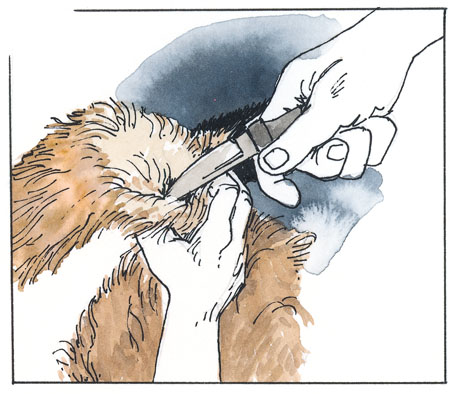 6. Split the tails all the way down to the tip. This allows them to dry properly.
6. Split the tails all the way down to the tip. This allows them to dry properly.
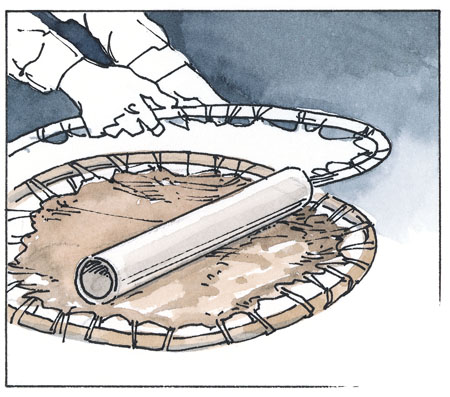 7. When drying a pelt on a stretcher, always insert a cardboard tube (one or two inches in diameter) or a rolled up newspaper into the pelt to allow air circulation. The length of the roll extends from the tail up to the chin. I also keep a fan blowing on them to allow air to flow up through the inside of the pelt. After a day or two, you can remove these.
7. When drying a pelt on a stretcher, always insert a cardboard tube (one or two inches in diameter) or a rolled up newspaper into the pelt to allow air circulation. The length of the roll extends from the tail up to the chin. I also keep a fan blowing on them to allow air to flow up through the inside of the pelt. After a day or two, you can remove these.
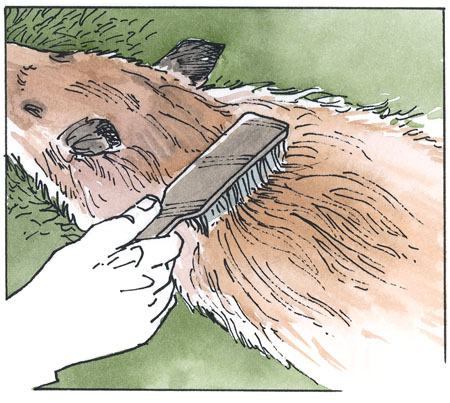 8. Clean your pelts by pulling the burrs out and wiping off blood and debris. I have an old hair brush that I use to brush out the fur.
8. Clean your pelts by pulling the burrs out and wiping off blood and debris. I have an old hair brush that I use to brush out the fur.
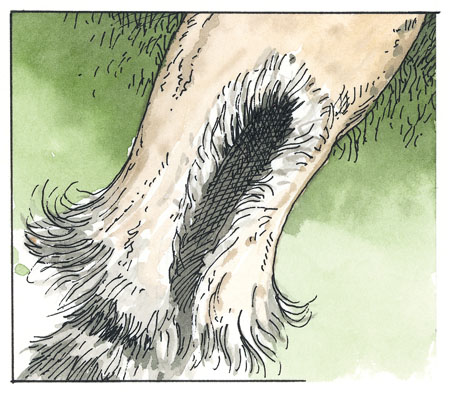 9. For raccoon pelts, it’s okay to cut out the “tear drop” display panel in the belly area. This gives fur buyers the ability to visually inspect the fur.
9. For raccoon pelts, it’s okay to cut out the “tear drop” display panel in the belly area. This gives fur buyers the ability to visually inspect the fur.
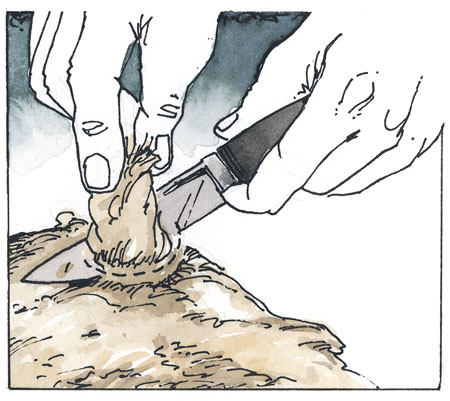 10. Cut out all flesh and fatty tissue around the ears. This is one area that requires special attention. My fur buyer says it’s okay to cut the cartilage completely off the ears (from the flesh side). Also, you can cut the legs flush to the hide.
10. Cut out all flesh and fatty tissue around the ears. This is one area that requires special attention. My fur buyer says it’s okay to cut the cartilage completely off the ears (from the flesh side). Also, you can cut the legs flush to the hide.
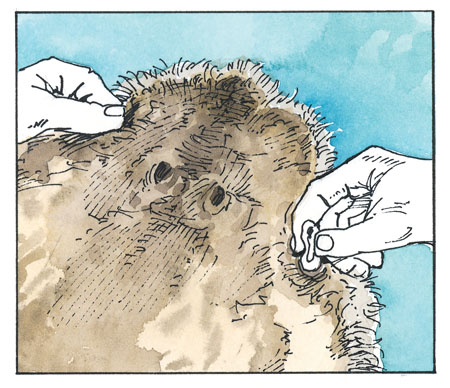 11. For beaver pelts, be sure to pinch off the leg openings so they dry completely shut.
11. For beaver pelts, be sure to pinch off the leg openings so they dry completely shut.
